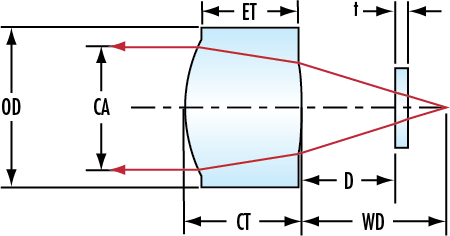
LightPath® Geltech™ Molded Aspheric Lenses are used to eliminate spherical aberration and improve focusing and collimating accuracy in a variety of laser applications. Low NA aspheric lenses are designed to maintain beam shape, while high NA lenses gather all available light to maintain beam power over long distances. LightPath® Geltech™ Molded Aspheric Lenses are ideal for applications including sighting systems, bar code scanners, laser diode-to-fiber coupling, optical data storage, or biomedical lasers.

or view regional numbers
QUOTE TOOL
enter stock numbers to begin
Copyright 2023, Edmund Optics Inc., 101 East Gloucester Pike, Barrington, NJ 08007-1380 USA
California Consumer Privacy Acts (CCPA): Do Not Sell or Share My Personal Information
California Transparency in Supply Chains Act
The FUTURE Depends On Optics®